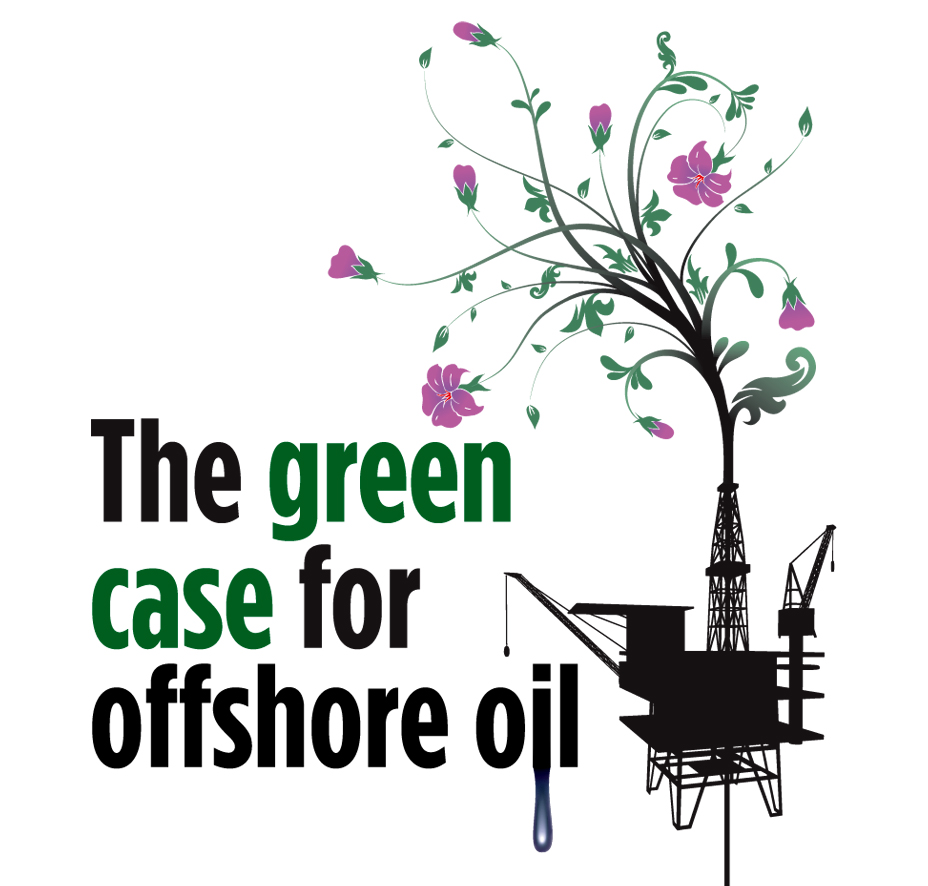The Obama administration sparked an uproar last week when it approved new oil and gas drilling in U.S. waters off the coasts of Virginia, other parts of the mid- and south Atlantic, the eastern Gulf of Mexico and parts of Alaska. Drilling remains off-limits near New Jersey and California, but Interior Secretary Ken Salazar called the decision “a new direction” in energy policy.
Indeed, offshore drilling has been seen as taboo for decades. The 1969 Santa Barbara oil spill was a galvanizing moment for environmentalists. It helped launch the modern environmental movement and gave us a new symbol of environmental threat – the offshore oil platform.
Environmentalists rallied repeatedly against proposals for more offshore drilling, and opposition to drilling became a litmus test for politicians who wanted to call themselves pro-environment.
For 40 years, California’s politicians – Democrats and Republicans – resisted efforts to tap into the state’s offshore oil reserves.
But a lot has changed in the past four decades. The technology of oil drilling has made huge advances. New environmental threats have emerged – most important, global warming. The time has come for my fellow environmentalists to reassess their stand on offshore oil.
It is not clear that the risks of offshore oil drilling still outweigh the benefits.
The risk of oil spills in the United States is quite low. One result of the 1969 oil spill is that we have detailed records on every oil spill into U.S. waters greater than one barrel and comprehensive studies of the sources of oil in marine waters throughout the world. They show that the offshore oil industry spills a surprisingly small amount of oil and that the number and size of spills have declined sharply since the 1970s because of technological advances in drilling and tighter government regulations.
There have been no catastrophic oil spills from U.S. platforms since 1969, even as more than 4,000 offshore platforms operate in U.S. waters. Changes in ship design and safety procedures have made tankers less risky since these disasters, but tankers remain a risk.
From 1971 to 2000, offshore facilities and pipelines were responsible for only 2 percent of the oil in U.S. waters. The bulk of it (63 percent) came from natural seepage, and 22 percent came from municipal and industrial runoff.
Worldwide, natural seepage is the largest source (47 percent) of oil in water, followed by spills from ocean transportation (33 percent). In short, the risk of oil spills from platforms is small.
In contrast, there are relatively high environmental costs associated with importing oil as opposed to producing it in the United States.
There are three problems with importing oil: First, spills from tankers and barges are the largest human-caused source of oil in the oceans. Oil is more likely to be spilled from a tanker than from a platform, and tankers have the potential to cause catastrophic spills.
The groundings of the Exxon Valdez (off Alaska), the Castillo de Bellver (South Africa), the Amoco Cadiz (France), the Irenes Serenade (Greece) and the Torrey Canyon (Britain), to name a few, all had severe effects on local ecosystems.
Second, the countries from which we import oil have lower environmental standards than the United States has. In particular, many foreign oil producers choose to vent methane – a powerful greenhouse gas – directly into the atmosphere rather than spend extra money to capture or flare it. Mexico, for example, produces less than half the oil that the United States produces but emits six times as much methane.
Third, shipping oil to the United States requires burning a huge amount of diesel oil, the exhaust from which is greenhouse gas pumped into the atmosphere. Just as environmentalists argue that eating locally grown food is better for the planet because it saves transportation costs and energy, locally produced oil has less of a negative impact.
Depending on the country of origin and the tanker size, 1 percent to 3 percent of the oil in every tanker is consumed merely for delivery.
In 1969, we had many reasons to fear offshore oil drilling. But in the past four decades, offshore oil has become far safer, and our country faces new environmental risks. The real question about drilling off our coasts can be settled by due diligence: How much greenhouse gas is released into air when we drill for oil along our coasts, and how much is released when we import it?
A rigorous study should be conducted to find out. If assessments show that domestic oil production contributes less to global warming, environmentalists should support it. We should not be living in the past.
Eric Smith is a professor in the political science department at the University of California at Santa Barbara. He is affiliated with the university’s Bren School of Environmental Science and Management and the environmental studies program.
Copy the Story Link
Send questions/comments to the editors.



Success. Please wait for the page to reload. If the page does not reload within 5 seconds, please refresh the page.
Enter your email and password to access comments.
Hi, to comment on stories you must . This profile is in addition to your subscription and website login.
Already have a commenting profile? .
Invalid username/password.
Please check your email to confirm and complete your registration.
Only subscribers are eligible to post comments. Please subscribe or login first for digital access. Here’s why.
Use the form below to reset your password. When you've submitted your account email, we will send an email with a reset code.